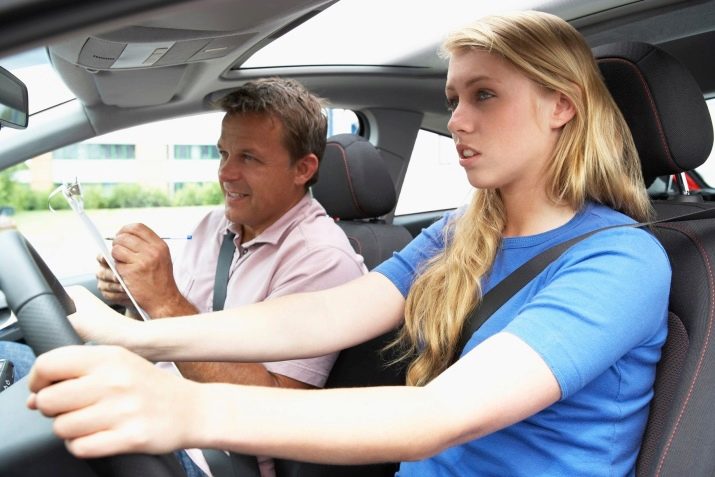Amaxophobia: features and methods of struggle

Most likely, everyone has met a person in life who categorically refuses to drive a car and prefers to travel by public transport, walk or be in the role of a lifelong passenger. Even if such a person has a car, they can diligently avoid the driver's seat because they are afraid. Fear of driving is amaxophobia.

What it is?
The fear of driving is usually occurs among novice drivers, cadets of driving schools, but it also happens among drivers with extensive experience as a consequence of severe psychological trauma after the accident. For some reason, it is believed that the fear of driving a car is a typical female problem. However, medical statistics show that amaxophobia is equally common in women and men, it's just that the latter are less likely to admit to themselves and those around them in panic fear of the prospect of driving.
The fear of driving a car belongs to the category of specific phobias. In the International Classification of Diseases, it is assigned the F-40.2 code, which codes for all local phobic disorders.
At first glance, amaxophobia is not a big problem - you are afraid to drive a car, do not drive it and the problem will be solved. But not everything is so simple. A particular problem can become global, as the mental disorder, which is amaxophobia, tends to progress rapidly. It can lead to the development of other mental problems.
In psychiatric practice, cases are described when an amaxophobe, who initially was only afraid to get behind the wheel of a car, eventually began to be afraid of any transport, even refused to board a tram or bus as a passenger.This is fraught with the fact that a person will have to adjust his life to the fear - to look for a less prestigious job (but next to the house, you do not need to go), refuse to meet with friends (you have to take the metro for half the city). Therefore, it is believed that amaxophobia, while it is still just beginning, must be treated in order to preserve the quality of human life.


Why does it arise?
The reasons for developing a fear of driving are numerous. Most of them lie in negative experiences. Most often, the disease becomes the consequence of psychological drama, severe shock suffered in childhood, adolescence and even adulthood.
It is not difficult to understand what events are in question - they are somehow connected with cars. These are road traffic accidents (RTA), in which the person himself was injured, injured. At the same time, he could be at the time of the accident both at the wheel and in the passenger seat. Cases are described when the fear of driving a car appeared in a downed pedestrian who survived a collision with a car and was injured.
A mental disorder can develop against the background of a tragedy - the death of someone close to him after an accident. Phobic disorder is more characteristic of impressionable natures with suspiciousness, increased anxiety. These characteristics can be found in mature men and women, young girls and boys. Sometimes amaxophobia develops in people who did not directly experience tragic events themselves and did not get into accidents.
If a person is in severe stress, depression, he has a vulnerable and unstable nervous system, then even a news release that reports a large-scale accident and reinforces the message with bloody footage from the scene of the accident can become a "starting mechanism" for a phobic disorder.

Psychotherapists attach great importance to the role of education. If parents and grandparents explained to a child that cars are a danger, that they will definitely hit him, if he starts crossing the road in the wrong place, goes to red, plays near the road, then the likelihood of developing a phobia increases. An important condition is that the child should also be quite easily suggested, anxious and suspicious. Of course, children need to be told about the rules of behavior on and near highways, about the rules of the road, but everything is fine in moderation.
If the family already has an adult amaxophobe, then the likelihood that the child will grow up the same is even higher. A parent who diligently avoids vehicles automatically transmits behavior patterns to a son or daughter. Parents who are more successful in the formation of phobias in their own children than others, who consider the method of intimidation to be the most effective educational method. They invent and describe in detail horrifying pictures of what can happen to a child if he decides to cross the road in the wrong place.


Symptoms
Amaxophobia in its manifestations is not far removed from most phobic disorders. A frightening situation causes an adrenaline rush that manifests itself on a physical level drops in blood pressure, increased heart rate, etc.
If it is necessary to get behind the wheel, a person with this phobia experiences the strongest fear, which prevents him from thinking rationally, sensibly, manifestations of fear cannot be controlled. Adrenaline causes dilated pupils, pallor of the skin, hands and back sweat, fingers tremble, a person feels weak in the legs, and unpleasant sensations appear in the stomach area, which are physiologically associated with the outflow of blood from internal organs and its inflow at the command of the brain to muscle tissue ... In severe cases, nausea, vomiting, and fainting may occur..
Amaxophobe himself understands that his fear cannot be considered rational, because it is not connected with a real threat to life at the moment... But this is still an excessive manifestation of the instinct of preservation, the brain of a person suffering from a phobia is trying in every possible way to protect him from possible getting into a dangerous situation, for example, in an accident.
Phobia differs from a healthy fear, which a person can cope with on his own, uncontrollable. Panic is growing, the person cannot control the situation. He has an inexplicable, strong need to run away and hide somewhere in a safe place.

Uncomplicated classical amaxophobia manifests itself in certain situations - while driving, when a person has to get behind the wheel, while in the car (even as a passenger), while driving (there is no fear in a standing car, it appears only at the moment the engine starts and starts moving). In a severe form, a complicated phobia extends to situations of being in public transport, taxis, minibuses.
Quite quickly, phobes begin to practice avoidant behavior - they try to live in such a way as not to face frightening situations. They walk, refuse to get a license. But the most dangerous is a sudden panic attack, which, for example, can happen to a person with moderate amaxophobia while driving. If you get behind the wheel, get under way and drive, then in any emergency situation on the road (someone honked, cut off, overtook, a pedestrian suddenly ran out onto the roadway) the fob experiences instant severe panic attacks that can lead to an accident and tragic consequences.

How to get rid of a phobia?
A modern person who needs to regularly travel significant distances, to be in several places during the day, just needs to be able to overcome the fear of driving a car or the fear of transport in general. But advice from psychologists from the Internet or enrolling in courses and trainings to overcome fears will not help much. They never take into account the individual characteristics of the phobic disorder, and after all, starting from the root causes, situations differ from person to person.
Therefore, for those who are determined to defeat amaxophobia, there is only one thing to advise - you need to start by visiting a psychotherapist or psychiatrist.
If it is uncomfortable to go to a psychiatrist (this is our mentality in relation to these necessary and very important medical specialists), then visiting a psychotherapist is a normal, familiar thing for most residents of different countries.
The sooner you contact this specialist, the faster you can get rid of the phobia, the more favorable the future prognosis will be. Neglected, perennial forms of this type of fear are very difficult to treat. The first symptoms can make themselves felt in adolescence, as well as at the beginning of training in a driving school. If several times in a row it is impossible to get behind the wheel due to panic, should not be postponed with referral to a specialist.

The psychotherapist begins by identifying the causes that led to the development of fear. They can be hidden deep in childhood, but it is necessary to find out them, because the effectiveness of psychocorrection and treatment depends on it. The doctor does not force a person to overpower himself, does not demand to take and overcome fear by an effort of will, since the medical specialist understands well that in the case of a phobia, this is impossible in principle, because a person loses control over his actions in a panic.
Helps to cope cognitive-behavioral method of psychotherapy. It is based on a person's revision of his attitudes, because of which fear is born. At the second stage of treatment, the specialist begins gradually, under his control, to offer the patient situations in which he was previously so afraid to find himself. Key responses to these situations must change.
It is clear that the psychotherapist will not sit behind the wheel with you and go for a drive around the city. For this are used audio hypnosis sessionswhen a person in a trance sees himself in the car, starts the car, drives around the city, encounters unusual and emergency situations. His reactions to them are worked out together with the psychotherapist and corrected.


If fear is not associated with panic attacks, they speak of mild amaxophobia. Often, it is eliminated as the novice driver acquires the proper driving experience, therefore do not neglect additional lessons with an instructor.
Only new, acquired experience will give you more confidence in your abilities and help you cope with the excitement behind the wheel.
There is no need to treat such fears in the full sense of the word. But severe forms of amaxophia, which are associated with fear of transport in general, need serious treatment. In this case, medications can also be recommended - antidepressants, rarely tranquilizers... The key role is also assigned to psychotherapy.
In all cases, at the stage when the acute symptoms of fear disappear, training on special simulators is useful. These are in driving schools, and there are driving simulators in the form of applications and computer programs. Often, psychotherapists recommend computer racing games. At the stage of recovery, you should often ride in the front passenger seat, so a person gradually gets used to seeing the road through the windshield - this is a familiar driver's view.
Do not assume that fear will pass quickly, that a few sessions with a specialist will be enough. For the most part, overcoming the problem requires about 2 months with mild stages of the phobic disorder. More severe forms require longer treatment. Inexperienced attempts at self-treatment are fraught with the rapid progression of phobia and the addition of depression, an inferiority complex - these situations will already require a more serious medical approach.









